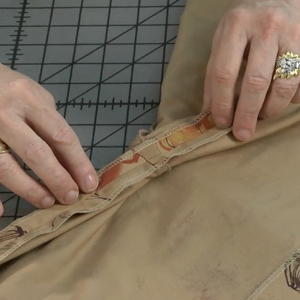
In this video from Industry Insider Techniques Vol. 7, Louise Cutting demonstrates two methods for threading a hand-sewing needle that will benefit left-handed and right-handed sewers. She also shows how to prevent the thread from twisting.
Louise Cutting shares years of expert experience in this Industry Insider installment. It’s amazing how much you’ll learn as this gifted instructor demonstrates professional techniques, such as fine hand stitching and flawless miters. This level of workmanship is second nature to pros, and now you’ll see how they contribute to the quality of handsewn garments – and how to do them yourself.
The 15-part Industry Insider series shows you how to match stripes, prints, and plaids; reinforce underarm seams; sew a smooth neckline zipper finish; and many more expert techniques.
Watch more videos from this series here, or purchase the complete DVD from our store.


































I've always wondered about this. I'm right handed, but have used the left handed technique--no wonder I've had problems. Thank you, Louise for another great tip.
What if you don’t have an iron handy to iron the thread. I usually do my hand sewing when I’m away from home.
If you're not near an ironing board, you can try using the warmth of your hands to lightly melt the wax into the thread. I'm not sure this will work in every case, but lightly pinch the waxed thread in a folded paper towel, and slowly run your fingers long it. You won't get the same penetration of melted wax into the thread, but you may be able to minimize the amount of wax that crumbles off the thread.
Another option, if you know you'll be doing some hand-sewing on the go, is to wax some thread before leaving the house. Thread several needles with the waxed thread and take them with you.
Carol Fresia
Threads Senior Technical Editor
You can use a hair dryer, heated rollers, flat iron or curling iron.
Heat a spoon on an electric burner to use as a small iron etc.